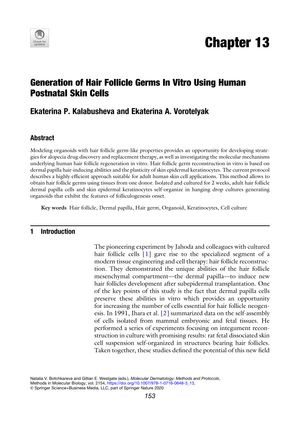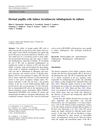Generation of Hair Follicle Germs In Vitro Using Human Postnatal Skin Cells
January 2020
in “
Methods in molecular biology
”

TLDR Scientists created early-stage hair follicles from human skin cells, which could help treat baldness and study hair growth.
The document from 2020 details a protocol for creating hair follicle germ-like organoids in vitro from human adult skin cells, a promising development for alopecia treatment and hair biology research. The method involves isolating dermal papilla cells and epidermal keratinocytes from skin biopsies, which are then cultured in a 1:1 ratio and organized into organoids using a hanging drop culture system. These organoids begin to show signs of hair follicle formation after 3 days, indicated by the expression of early development markers. The addition of hyaluronic acid is noted to enhance organoid development. This technique enables the generation of hair follicle germs from individual donors, which could be used for personalized medicine, drug development, and as a model to study hair follicle biology. The research was funded by the Russian Science Foundation under Project no. 16-14-00204.











